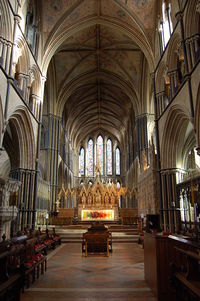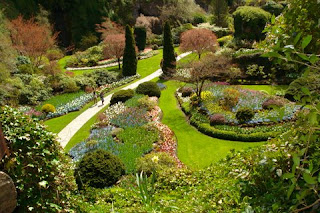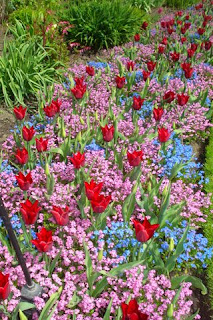Worcester Cathedral
My cousin Chris is chief gardener at the Worcester Cathedral. I've visited there several times. Chris is driving down to Caerphilly to pick me up and we'll go back to Worcester together. He's a great guy to spend time with: a mountaineer, marathon biker and all-around good sport. So we're looking forward to a few pints and lots of talk about our travel adventures.
Undoubtedly I'll visit the Cathedral again. The Cathedral was actually founded in 680 but the original cathedral no longer exists, although the crypt dates from the 10th century. It was built between 1084 and 1504 and represents every style of English architecture from Norman to Perpendicular Gothic. It's famous for its Norman crypt and unique chapter house. One of the interesting things inside the Cathedral is the tomb of King John. There's also a memorial to Prince Arthur Tudor whose younger brother was Henry VIII.
Cathedral Interior
Chris is going to take me to Warwick Castle, a place I've never been to before. This is a medieval castle on the River Avon, built by William the Conqueror in 1068. It was used as a fortification until the early 17th century, then converted into a country house by Sir Fulke Greville, who became the earls of Warwick from 1759 to 1978. This castle has been used a s a prison and was used to imprison the English king, Edward IV. In reading about the castle one thing intrigued me, and that was the involvement of the notorious Richard III who, in the early 1480's, had two gun towers, the Bear and Clarence Towers, constructed which were left unfinished on his death in 1485. The towers had their own well and ovens and were an independent stronghold from the rest of the castle, possibly in case of mutiny. Queen Elizabeth I visited the castle on a couple of occasions.
Warwick Castle
The castle is protected as an ancient monument and is one of Britain's top 10 historic houses and monuments. These days there are lots of interesting things to see at the castle including archery and jousting displays, "The Castle Dungeon", a live actor experience and seasonal attractions including the "Flight of the Eagles", a bird show featuring bald eagles, vultures and sea eagles. There are also gardens around the castle that are open to the public.
Warwick Castle has hauntings too. There's a show called "Warwick Ghosts Alive" which portrays the murder of Sir Fulke Greville who had been given the castle by King James I. There's also supposed be the ghost of a little girl. Sounds like lots of spooky fun!
photos courtesy Wikipedia.














































